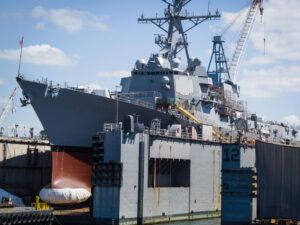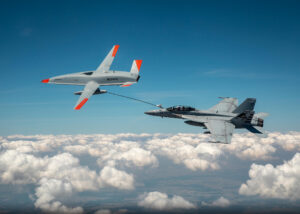Almost 20 years ago, in May 2005, I was among a small cadre of aircrew and maintainers who stood up the first CV-22 squadron in the Air Force, the 71st Special Operations Squadron (SOS) at Kirtland Air Force Base.
That sunny spring day in New Mexico was a historic milestone, transitioning the Osprey from flight test article to a critical player in the Air Force Special Operations Command (AFSOC) combat arsenal. All of us understood our role: to establish the training pipeline so future aircrews could employ this amazing aircraft in ways that, given its unique capabilities, were still not fully envisioned.
It’s now almost impossible to imagine a time in the AFSOC without the CV-22 Osprey. The Osprey has been at the forefront of AFSOC’s toughest missions since its first combat deployment in 2009.
Difficult choices before the Osprey
But I remember this time very clearly, as a younger officer flying the MH-53 Pave Low helicopter. In those days, we had to make difficult choices when considering which aircraft to employ. Those choices injected limitations into our ability to carry the fight to our nation’s enemies. The Pave Low was a rotary wing beast, able to carry special operations forces (SOF) and equipment to the most austere and challenging landing zone. However, like any helicopter, it was limited in air speed, altitude and range.
AFSOC’s MC-130 aircraft could carry a lot and go a long way, but they needed some form of runway at the end of the journey. This stark difference injected mission complexity during the attempted rescue of American hostages in Iran in 1980, leading to mission failure and the loss of eight Americans. While that tragedy spurred the creation of AFSOC in 1990, special operations leaders and planners still had to balance these tradeoffs; it’s just the way it was.
Enter the Osprey. The CV-22’s amazing ability to take off and land like a helicopter, but fly enroute at fixed-wing altitudes, speeds and ranges, is well established. What’s less transparent is how it transformed the mindset of commanders and how they could execute their missions. Over the past 15 years, they have grown accustomed to not having to make those tradeoffs. They’ve had the great fortune of creating plans that previously were simply not possible, leading to untold numbers of missions that could not have happened without tiltrotor capability.
Let’s be clear; the CV-22 does not replace purely rotary-wing and fixed-wing assets. Today’s special operations commanders need multiple tools in the aviation toolkit for the increasingly complex range of operational challenges they’ll confront.
In 2005, as the 71st SOS colors were unfurled, the select cadre of pilots, flight engineers and maintainers set out to provide those decision-makers capabilities that were just emerging. We were all eager to start turning concepts into realities, develop and train in the tactics and build the community of aircrew who would eventually take the aircraft into combat.
Although we had an idea of what this might look like, we knew we were dealing with a whole new concept of SOF aviation employment. Since then, it has been professionally and personally rewarding to see what air commandos have since realized with the CV-22 from these beginnings.
Expanded capabilities and capacity
This does not whitewash the cost. To the general public and even some national policymakers, the Osprey is known more for high-profile accidents than the capabilities it delivers for our nation. When a voracious media culture intersects with that of AFSOC’s quiet professionals, this is a predictable result. The CV-22 community is still dealing with a tragic mishap in November 2023, which took the lives of eight precious airmen. When a brother or sister in arms is lost, no one feels it more keenly than their squadron mates.
There’s no argument that the Osprey is a complex machine that requires robust training and steadfast maintenance. But it rewards this dedication with unequaled capacity for unique mission flexibility that planners revere and aircrew embrace.
During the suitable stand-down time between the November 2023 mishap and clearance to resume flight operations in March 2024, I guarantee that CV-22 aircrew were not wringing their hands in consternation over returning to flight. They were chomping at the bit to get back out there, to continue honing their skills and readying themselves and their tiltrotor fleet for the distinctive mission sets only they could do.
Approaching 20 years since we stood up that first CV-22 squadron, the Osprey has grown from the budding concepts we envisioned into directions we could not have even conceived. It has not come without a cost; application of special operations forces to defend our nation rarely does. But the necessity for the CV-22 to provide the critical capabilities — that other aircraft can’t — remains as strong as ever.
The men and women who fly and fix it stand ready. I remain honored to have been part of their community and blessed for the chance to help realize the air commando vision for the Osprey.







